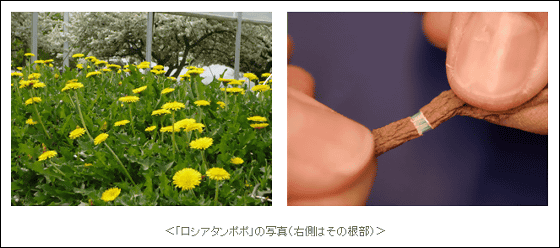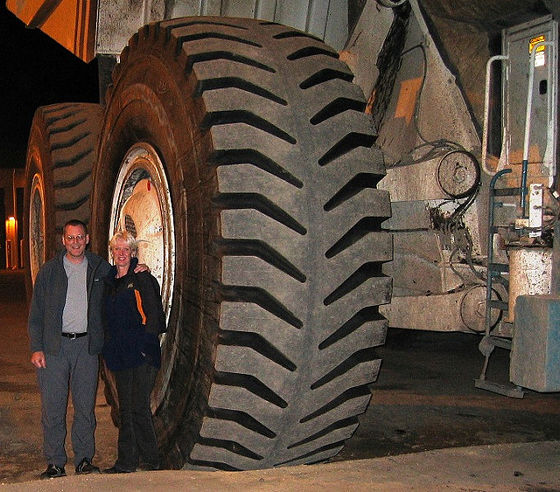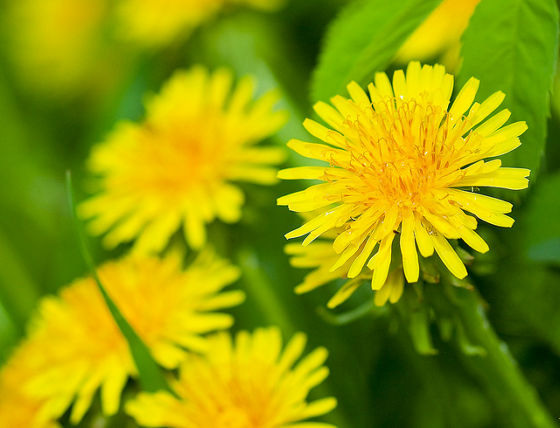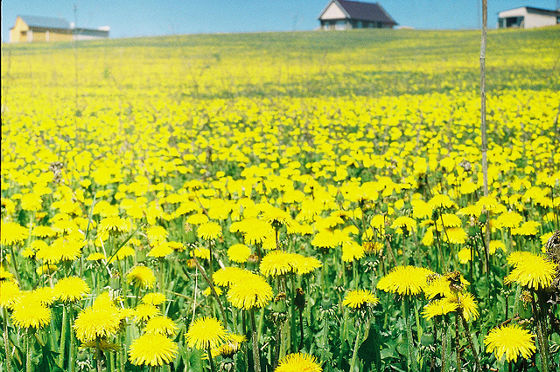Research to produce natural rubber as a raw material for automobile tires from small dandelions is ongoing

ByDoug Brown
One of the essential parts of a car running around the world to carry people and thingstireis. Tires need natural rubber produced from trees such as "rubber nooki" as a raw material, but from around 2007, researches are being made to produce natural rubber from "dandelion" as a raw material, Realization of production on a scale comparable to production capacity is coming into view.
Tire makers race to turn dandelions into rubber | Reuters
http://www.reuters.com/article/2014/08/20/us-dandelion-rubber-idUSKBN0GK0LN20140820
Production of natural rubber, which is one of the raw materials of tires, is limited mainly to areas such as Southeast Asia, and voices concerned about the risk of supply unrest caused by plague and the like were raised. Under such circumstances, it was the United States and the researchers who were studying the production of natural rubber made from ingredients that can be taken from the roots of dandelionsOhio State UniversityResearch team. Currently, the project is the world's largest tire makerBridgestoneOr 4th placeContinentalIndustry-academia partnership consortium "PENRA"Research has progressed and developed.
Bridgestone announced the following release in 2012 for making tires using Russian dandelion.
Accelerate research activities on natural rubber resource 'Russian dandelion' | News release | Bridgestone Corporation
http://www.bridgestone.co.jp/corporate/news/2012051701.html

Many people think of "yellow dandelions and plants growing in the mountains and towns when they hear" dandelion ", and there should be few people who think that it will be a raw material for tires. However, in the near future, it seems that the era will come when dandelions are grown systematically on a large scale and treated as raw materials for industrial products.
Dandelion used for natural rubber production is "Kazakhstan native"Russian dandelionIt is a variety called so called "white" which secretes highly viscous liquid from its roots. This liquid contains substances called rubber particles, but it has a sufficient quality as a tire for automobiles comparable to the ingredients that can be taken from "rubber nooki" which has been used to produce natural rubber It is known to be able to collect.

Dandelion has been improved, varieties have been added, the height of the back is about 30 cm lower than ordinary dandelion is made, and usually the leaves that grow laterally stretch in the longitudinal direction Improvements have been made to make it easier for the robot to grab and harvest at the factory. As nutrients can be produced even in poor land, we plan to be able to produce in many places all over the world.
The amount of natural rubber used for the production of tires for automobiles accounts for two-thirds of the natural rubber produced in the world, and the production of natural rubber which has been almost limited to the limited countries of Southeast Asia so far The system that depended on it had various risks. Since synthetic oils of petroleum origin have been invented, it has already been over 100 years, but because natural rubber has properties superior to synthetic rubber in terms of flexibility at low temperatures and resistance to breakage, even now Natural rubber is indispensable for the production of tires. For tires for general automobiles, 10 to 40% of the raw material is required, and for trucks and aircraft tires natural rubber is required at even higher ratios.

ByD W S
The risk that the tire maker most fears is that such natural crisis actually occurred in the past, as natural rubber production is hit by being infected with plague and the like. For tire manufacturers whose issue of vulnerability of raw material supply is a problem, seeking new plants to be an alternative production means is urgently called for. When rubber malfunction caused by bad weather occurred in 2011, we recorded a record high value exceeding 6 dollars (about 600 yen) per kg. However, the price in recent years is sluggish as 2 dollars per kg (about 200 yen). This is also because the low economic growth of China, the world's largest rubber consuming country, is anticipated. It also spurs this instability, requiring a period of about seven years to develop a new rubber plantation.
Research on Russian dandelion is under way to avoid such risks, but this time it is not the first time that attention was gathered in this plant. In the era of World War II, there was a history that Russian dandelion was cultivated in Europe and the United States where supply of raw materials from Asia was stagnant and it was used as a source of emergency although crop yield was poor After the war, supply was restored, there was a situation that it shifted to more cost-effective Asian natural rubber. Since then, due to supply anxiety due to plague etc., research from Russian dandelion to produce rubber from 2000 began again.

ByCumulus Humilis
This study started in 2007. A research team at Ohio State University is a shrubla native to Russian dandelion and southwestern United States and MexicoGuayule rubberWe started researching and later Bridgestone and the American tire manufacturerCooper tire, And research has been promoted as an industry-academia partnership consortium "PENRA". After that, a research team based in Europe, IndiaApollo tire, A tractor tire maker of the Czech RepublicMitas, And the situation that the above-mentioned Continental participates one after another.
Research to date has proceeded smoothly, and in the present prototype,1 haIn terms of production volume converted to 1500 kg, we succeeded in producing rubber, which is comparable to the amount produced in the current rubber plantation. In the research team, about3.3 hectaresWe are cultivating Russian dandelion on the scale of 8 acres corresponding to If a production capacity of 1000 kg per hectare is realized, it is possible to produce natural rubber consumed in the world only by the cultivation area equivalent to the area of Austria, so it is possible to efficiently produce stable Expectations are gathered.

When the PENRA project ends in 2020, detailed business plans and guidelines for producers will be made public. The process of processing the harvested raw material to rubber has not yet been clarified yet but basically it is to cut the root part and cut it into pulp while adding water, Rubber raw materials will be generated. Ingrid van der Meer, who is involved in the research, said about this project, "Sugar beets made with sugar beet have a thick root, but wild sugar beet, which became its ancestor, has roots as thick as human thumb "It talks about the possibility of breed improvement.
Although it was confirmed that the performance equivalent to that of the conventional tire was confirmed by performing the test with the prototype, it is only a few years that the tire made from dandelion is actually on the market when the research project is completed It is said to be later. Although it is a project that is still being studied, it is already attracting a lot of attention and farmers who are considering production are inquired about "When to put in production?"

ByDenis Vahrushev
Related Posts:







